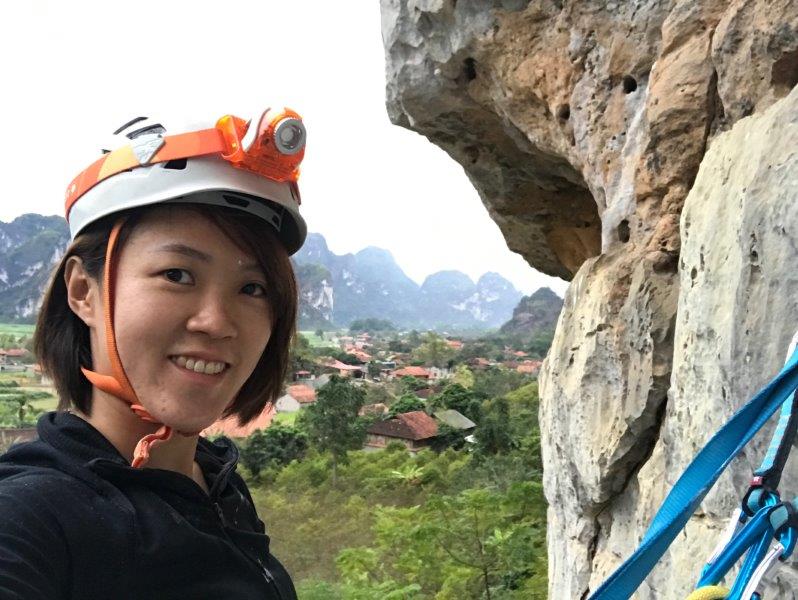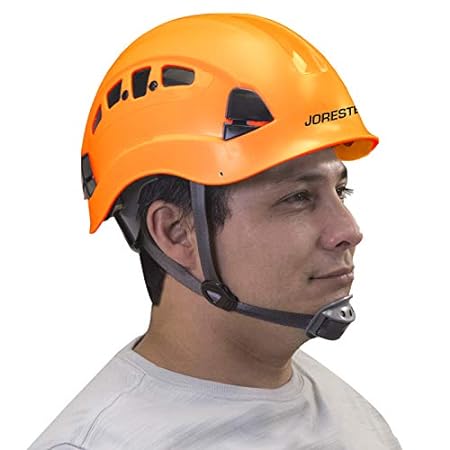Staying safe is the most important priority for climbers. This is why it’s so important to have a climbing helmet that is Osha approved. If you’re in the market for one, then this blog post will give you all of the information about what to look for in a climbing helmet that is osha approved!

What is the Best OSHA Approved Climbing Helmet?
To decide on the absolute best osha approved climbing helmet, we have examined dozens of climbing helmet that is Osha approved and reviews left by real users who bought and used them. Based on what they genuinely shared and experienced, we have shortlisted the top 1 osha approved climbing helmets for you to consider, including their most important features, in order for you to make an informed decision. On top of that, to make it easier for you, we have also compiled a list of critical things and frequently asked questions (FAQs) to consider before purchasing climbing helmet that is osha approved. You can find later further down in the article. So without further ado, here’s introducing the best osha approved climbing helmet.
1. JORESTECH 6-Point Ratchet Suspension Hard Hat
| Specs |
|---|
| Price: 💲 (fewer 💲 = cheaper) Weight: Lime, Orange, Pink, Red, White ounces Colors: ABS Plastic Shell Material: Attachable Face Shield: Attachable |
The Jorestech hard hat helmet offers general headwear protection for any work condition that requires a helmet. It features a low-profile design that allows unobstructed upward visibility and is compatible with eye, nape, and hearing protection gear. It offers decent impact protection with an ABS outer shell and shock absorption with a 6-point ratchet suspension system that allows multiple adjustment points for a secure and comfortable fit.
The Jorestech helmet also features a chin strap to keep it in place when looking up. However, many users find the chin cup uncomfortable, and it is easily removable without affecting the overall performance of the helmet. It also features adjustable ventilation holes to allow airflow when needed and a quick-detach, washable, and replaceable brow liner that keeps sweat out of your eyes.
Pros
- Comfortable and secure fit
- Compatible with safety accessories
- Decent head protection for working heights
- Moisture-wicking and washable soft brow liner
Cons
- Uncomfortable chin strap
- Slightly Brittle material
2. Petzl VERTEX VENT ANSI helmet Black
| Specs |
|---|
| Price: 💲💲 (fewer 💲 = cheaper) Weight: 14.39 ounces/490g ounces Colors: Black Shell Material: ABS (acrylonitrile butadiene styrene), nylon, polycarbonate, high-strength polyester, polyethylene Face Shield: Attachable Hearing Protection: Attachable |
The Vertex Vent by Petzl comes with an adjustable CENTERFIT system that keeps the helmet on the center of your head, greatly increasing the comfort. The six-point webbing suspension allows the helmet to mold to the shape of your head and makes it great for climbers that struggle with fit issues. The vents have shutters, allowing you to control the amount of airflow and protect your head in cold weather.
This helmet can be used for workers needing head protection; it allows for a VIZIR visor, a PIXA headlamp and accepts hearing protection. Offering superior durability as a professional model designed for use in construction and other fields, the weight of 490g might make most experienced climbers hesitant to use it.
Pros
- Sliding shutters across air vents can open in the heat and close in the cold
- Six-point textile suspension fits the head snugly
- Centrefit system keeps the helmet on the center of the head
- Extremely durable
Cons
- Heavy at 490g
- Professional grade helmet that might be too excessive for experienced climbers
What You Should Know Before Buying OSHA approved climbing helmets
Features And Varying Uses
Climbing helmets are meant to protect the head from injury from the impact caused by falls or falling rocks. They come equipped with a tough exterior shell, headlamp clips to affix a light source in the dark, vents to allow for airflow, foam padding for comfort and impact absorption, and several adjustable straps to secure it onto your head.
A climbing helmet is designed to disperse the point of impact, for example, of a falling rock throughout the helmet. It is built to absorb and distribute impact from the sides, front and back. However, the toughest construction is at the top of the helmet to protect from headfirst falls and rock falls. Hence, it is not suitable to be used in other activities such as biking.
Some helmets receive dual ratings and can also be used in ski touring or ski mountaineering. It is safest to only use a helmet for whatever activity it is certified for.
Benefits And Advantages Of Wearing A Climbing Helmet
The helmet is an essential piece of climbing gear that every climber should have strapped permanently to their pack. Most experienced climbers know of at least one accident that could have been avoided should a helmet have been worn. Yet a lot of climbers choose not to wear helmets, endangering themselves as well as their climbing partners.
Helmets protect the head in the event of a bad fall headfirst into a rock face or lateral falls that could potentially injure the head. Rockfall and icefalls are common whether in crags or up high in the mountains. Getting brained by a stray rock and making your partner struggle on a rescue attempt isn’t going to make a very fun day out.
Even on sport climbs, helmets save lives. Getting your leg stuck in front of the rope will flip you upside down and send you plummeting headfirst onto the rock. Helmets save lives!
Helmet Sizes And Shapes
Helmet sizing is a tricky one, we all have heads of all shapes and sizes. The best and safest option is to try before you buy, especially if you have a uniquely shaped head or a smaller or bigger head than the average person.
Check the size and keep in mind you might need room for a beanie or hat. Use the adjustable straps to find the minimum and maximum range the helmet can accommodate.
The helmet should not wobble when you cinch everything in place. Ensure all the straps aren’t slack and the helmet will stay snugly fitted even in dynamic motion. Jump in place, wiggle your head from side to side, be as active as you can while fitting a helmet.
Precautions To Note
Wearing your helmet can start from the parking lot if there is a chance of rockfall. You don’t have to wait till you are at the base of the climb to put on your head protection. On the approach, a good practice would be to put your helmet on well before you reach the base of the climb.
Ensure your helmet fits snugly and won’t come loose during a climb by securely fastening all adjustable straps as tight as possible without being uncomfortable. Check all straps for structural integrity frequently and replace the helmet if the straps appear worn or have tears.
Check the helmet’s outer shell frequently for dents and dings, as well as the inner foam padding for tears. Replace the helmet immediately if it is dropped from a height.
Climbing Helmets For Varying Types Of Climbing
There is a multitude of disciplines in climbing; indoor, tree climbing, outdoor sport, ice, traditional, mountaineering, and bouldering.Helmets are most frequently used in sport, traditional, mountaineering, ice, and multi-pitching. To pick a helmet for each activity, consider the length of time you will spend in it, and the ventilation features of the helmet.
The duration of wearing a sport climbing helmet is likely to be shorter than the duration of wearing a helmet on an all-day multi-pitch traditional climb or mountaineering adventure. A well-ventilated helmet meant for all-day sweaty climbs might not be suitable for wearing on an ice climb in sub-zero temperatures.
Top And Side Protection Of a Climbing Helmet
Climbing helmets have reinforced protection that covers the top, side, and rear. Most of the structural strength is focused on the top of the helmet to protect from falling rocks and head first falls.
However, recent studies and experiences have led to the necessity of protecting the back and sides equally well. Hence, top and side protection was introduced by Petzl in 2018.
When a helmet has a top and side protection label, it means it meets the EN 12492 Standard and UIAA 106 Standard tests that deal mostly with the top of the helmet. To test for this standard, a 5kg load is dropped from the back, front, and sides of the helmet at a height of 50cm.
Questions and Answers About OSHA approved climbing helmets
Can You Wear A Climbing Helmet For Cycling?
No, climbing helmets cannot be used for cycling. A climbing helmet is structurally the strongest at the top while cycling helmets protect from all sides. A climbing helmet disperses the energy from impact all around the helmet while a cycling helmet protects the head by cracking and distributing the impact throughout the surface.
Can Climbing Helmets Be Used For Biking?
No, climbing helmets cannot be used for biking. A climbing helmet is designed to absorb the impact of falling rock and distribute it throughout the helmet and the rest of your skull. It will not protect your head from high-speed impact with immovable objects. A motocross helmet almost completely envelopes the head and is designed to protect from high-speed crashes.
Should You Wear A Helmet Bouldering?
Climbing helmets are built to protect the top of the head. Since boulders are short, the chances of rockfall are minimal. However, a helmet with side, front, and rear protection might be beneficial to boulderers and help protect the head in a tricky landing or awkward fall, especially if the landing zone has other rocks. If you feel safer bouldering in a helmet, by all means, wear one.
How Long Do Climbing Helmets Last And Do They Expire?
According to reputable helmet maker brands like Petzl and outdoor retail giant REI, climbing helmets last typically ten years depending on the frequency of use. Regular climbers that climb several times a month should consider replacing their helmets every five years. Always check your helmet for any faults or damage and retire the helmet immediately after any significant impact such as a drop from a height.
Are There Climbing Helmets With Lights?
No. Climbing helmets often come with headlamp clips that allow you to affix the straps of your headlamp onto the helmet for those pre-dawn or night climbs. Helmets typically have 4 clips, two in the front, two in the back, that hold the headlamp straps in place and secures it to your helmet. Some helmets have rear mounts to additionally secure the headlamp.



No Comments